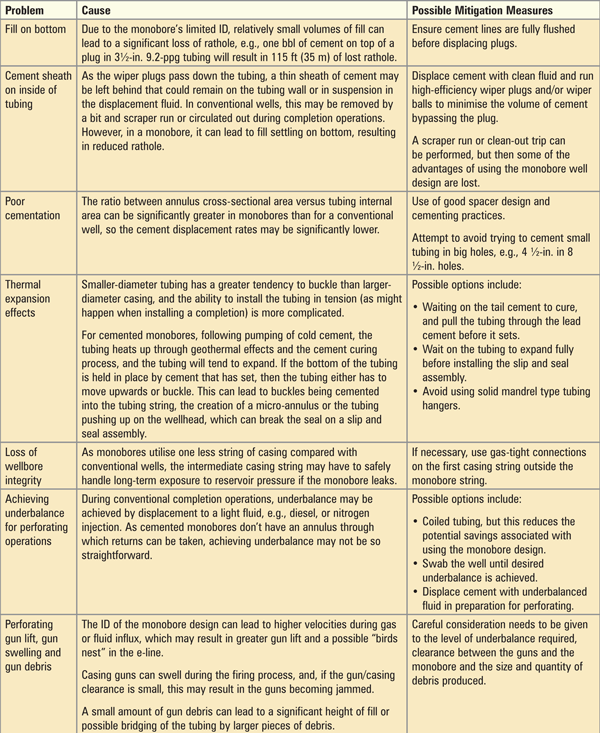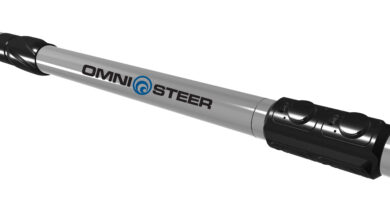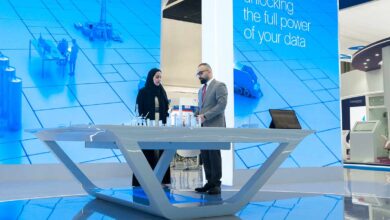Monobore wellbore design: Bangladesh exploration program highlights pros, cons
By Brian King, Tullow Oil
“Monobore” describes A well where the diameter of the production conduit is uniform from the reservoir to surface. The simplest form of monobore is a string of tubing cemented in place that eliminates the need for one casing string or liner when compared with a conventional well design (Figure 1).
The use of monobores has become widespread across the industry in an attempt to save on exploration and field development costs while maximising production.
Monobore Advantages
The advantages of the monobore design over conventional designs include:
- For the same size of surface casing strings, the monobore design allows a larger production conduit than a conventional well without having to utilise underreaming, bi-centre bits or expandable tubulars, for example.
- May eliminate one casing/liner string compared with a conventional wellbore design.
- If the well can be downsized (while still achieving the same size of production conduit), then the reduction in hole sizes will result in a significant saving in wellhead equipment, mud, casing, cement and drill bit costs.
- The number of specialist completion services can be significantly reduced, saving on well construction costs and logistical issues.
- The simplicity of design and reduced number of services required can allow the wells to be brought online as rapidly as possible, e.g., all operations can be performed with the drilling rig, potentially eliminating the need for a workover rig.
- May enable fracture stimulation to be performed without the need for installation of a frac string.
- Reduced number of components required in monobore well construction can lead to significant inventory management savings.
 Figure 1: Compared with conventional designs, a monobore design
Figure 1: Compared with conventional designs, a monobore design
can eliminate the need for a casing string/liner and allow a larger production conduit.
- May allow a smaller drilling rig to be utilised to drill a smaller wellbore, which may save on rig costs. This may also have the added benefit of reducing lease size, reducing chemical and material consumption to result in reduced environmental impact.
- May allow a larger number of wells in a development or exploration program for the same capital expenditure.
- When recovery factor, deliverability and reservoir characterisation are taken into consideration, it may be more cost-effective to drill a new monobore than to work over a conventional well.
MONOBORE LIMITATIONS
- If the upper casing strings are downsized to minimise costs, then contingency string options may be limited in the event that drilling difficulties are encountered.
- As the monobore production string will be cemented through, installing completion components such as sliding sleeves, subsurface safety valves, nipples and gas lift mandrels may not be possible or practical.
- The options available for re-entry and sidetracking a monobore well are more limited than for conventional wells.
- Selection of the monobore material may have to be made before the composition of the reservoir fluid is known. This can lead to problems if CO2 or H2S is present in wells to be tested for an extended period or ones that will eventually be put on production.
- The specification and cost of the monobore production string may have to be higher than in the conventional well in order for the monobore design to achieve a wellbore life similar to a conventional well where the completion string can be changed out when required.
- Isolation of perforations while maintaining access to deeper zones can be achieved by installing a tubing patch, but this leads to a restriction in internal diameter, which may compromise the ability to perform zonal isolation operations deeper in the well.
- If intervention operations are required, the diameter of the monobore (compared with the larger diameter of the production string in a conventional well) may restrict workstring size to small-diameter tubing/drill pipe, coiled tubing, e-line or slickline. These options are not always readily available or suitable.
- The monobore internal diameter may limit the type of tools available to be run, especially for logging tools, although slimmer tools are continually coming on the market.
Table 1

- Cannot optimise fluid lift capabilities by selecting the tubing size to suit the well deliverability or liquid gas ratio. This may be partially overcome by running acceleration strings or capillary strings for gas lift or surfactant injection.
- Hydraulic performance during drilling operations may be compromised (e.g., higher circulating pressures, lower HSI and higher ECD) through use of smaller drillstrings and reduced hole diameter.

Figure 2: A tie-back design can overcome many of monobore’s
challenges but also void many of its cost/time advantages.
- Drilling smaller hole sizes may result in an increase in the number of bit trips required to reach TD if roller cone bits are used because the smaller bearings in smaller-diameter bits may have reduced durability. (PDC drill bits may not be impacted to the same extent.)
- Perforation efficiency may be reduced by having to use smaller than normal guns or reduced shot density.
- If the monobore utilises downsized surface/intermediate casing strings compared with a conventional design, then the casing seat may need to be deeper to achieve the same level of kick tolerance.
- If fracture stimulation is required, the monobore contents must be pumped away before the fracture treatment reaches the perforations, which may not be optimal for stimulation efficiency.
- Inability to circulate via annulus.
Many of theses limitations can be overcome by using a tie-back monobore design (Figure 2), but then many of the cost and time advantages of the cemented monobore design would be lost, e.g., extra trip with drill pipe to run the liner, extra equipment and service company charges associated with running the hanger and tie-back seal assembly.
POTENTIAL ISSUES
In addition to the limitations associated with the monobore design, certain specific operational issues have been identified that may need to be considered and engineered out to achieve a fit-for-purpose well. Table 1 highlights some of these problems and possible mitigation measures.
BANGORA EXPERIENCE
Tullow Oil was awarded Block 9 in Bangladesh (Figure 3) in April 2001. At that time, Tullow was a relatively small international operator, a recent entrant into the country (where only two other IOCs operated), and this new venture represented a major expenditure commitment. Virtually all equipment and services had to be imported from outside Bangladesh, resulting in relatively high drilling costs.

Figure 3: Tullow Oil entered Bangladesh in 2001 upon being awarded
Block 9 and decided to use monobore designs to drill exploration wells.
The initial exploration drilling phase included three exploration wells, of which two were successes and one was plugged and abandoned. One of the successes, monobore well Bangora 1, was suspended on 15 October 2004, having reached a total depth in 8 ½-in. hole of 3,635-m RT (11,926 ft) with 4 ½-in. carbon steel production tubing cemented in place. Lalmai 3, which was also a successful monobore well, remains suspended due to the smaller gas rates achieved and distance from infrastructure.

Figure 4 (above) shows the wellbore schematic for Bangora 1,
which confirmed three hydrocarbon-bearing zones. The well was later
put on production through a purpose-built early production facility.
In November 2004, production testing of Bangora 1 confirmed three hydrocarbon-bearing zones that, when tested separately, flowed at 26, 44 and 56 MMscf/day. Figure 4 provides a schematic of the tested wellbore configuration.
In May 2006 (20 months after rig release), the well was put on production through a purpose-built early production facility and has produced more than 30 Bcf to date and is currently producing at 30 MMscf/day from the upper D sand. The tree with protective cage, flow line and extended production test facility are shown in Figure 5.
The monobore design was selected to save on well construction costs and minimise inventory and logistical issues associated with importation of tools and equipment to a remote area for an exploration campaign where there was no guarantee of hydrocarbons being discovered.
By cementing the 4 ½-in. production tubing inside the 8 ½-in. hole, the cost in time and materials of running and cementing a 7-in. liner plus completion string jewelry (e.g., packers, sliding sleeves and nipples) was saved. The cost of returning with a rig to install a permanent completion was also saved.
Subsequent Bangora wells 2, 3 and 5 were drilled and completed conventionally.
Pros of using a monobore design
- Significant cost savings were achieved by reducing the services and equipment required to construct and test the well.
- The design allowed all the zones to be tested quickly, cheaply providing sufficient information to allow the decision to be made to construct an early production facility and drill further appraisal wells.
Cons of using a monobore design
- A poor cement job was achieved when cementing the 4 ½-in. tubing in 8 ½-in. hole, resulting in significant water production from deeper water-bearing formations in the first production test. This zone was isolated with a bridge plug.
- For later tests, the lower sands were isolated using “retrievable” bridge plugs. However, the plug isolating the lower D sand – which had flowed 44 MMscf/day on test – from the upper D sand – which flowed at 56 MMscf/day on test – could not be retrieved with slickline. A workover rig or coiled tubing will be required to regain access to the lower D sand.
- The gas stream was found to contain approximately 0.6% CO2, resulting in corrosion of the carbon steel monobore. Remedial options are limited, and caliper surveys are being performed at regular intervals to measure wall thickness and predict the time to loss of integrity.
Figure 5 (down below) shows the well’s Christmas tree and flowline.

CONCLUSION
Monobore wells can be a cost-effective wellbore construction methodology in certain situations, but the full life cycle of the well needs to be considered. Potential early savings in wellbore construction costs need to be offset by possible compromised production later in the well life. Specific technical challenges of drilling a successful monobore must also be recognised and addressed.
This article is based on a presentation at the IADC World Drilling 2009 Conference & Exhibition, 17-18 June 2009, Dublin, Ireland.





My question is with a Monobore Wellbore is there an advantage when working over the well to not have to kill the well. Would this applied to well intervention work? I realize a major workover it would be necessary to kill the well but again what about well intervention work on well.
Thanks and Regards,
Andy Schiro
Chevron